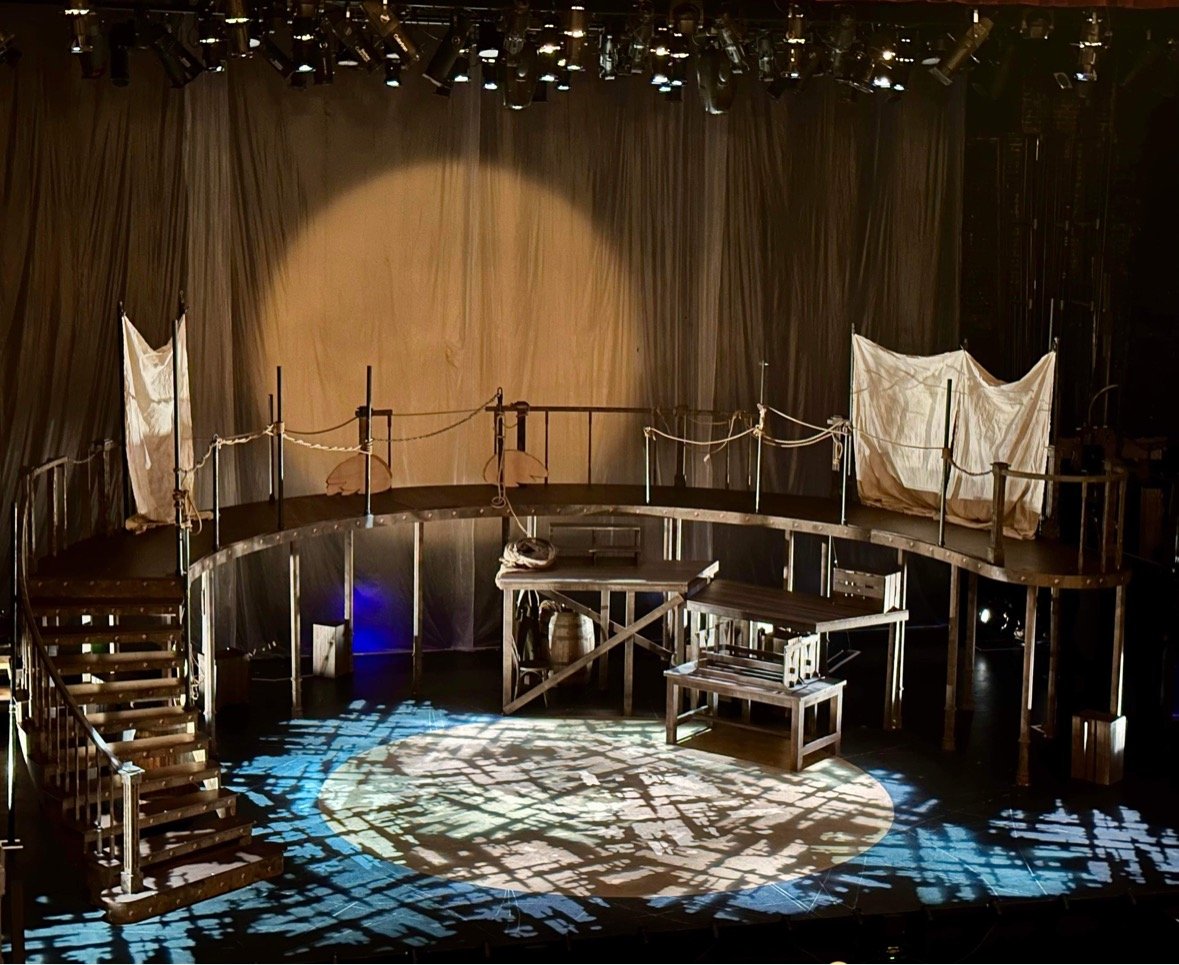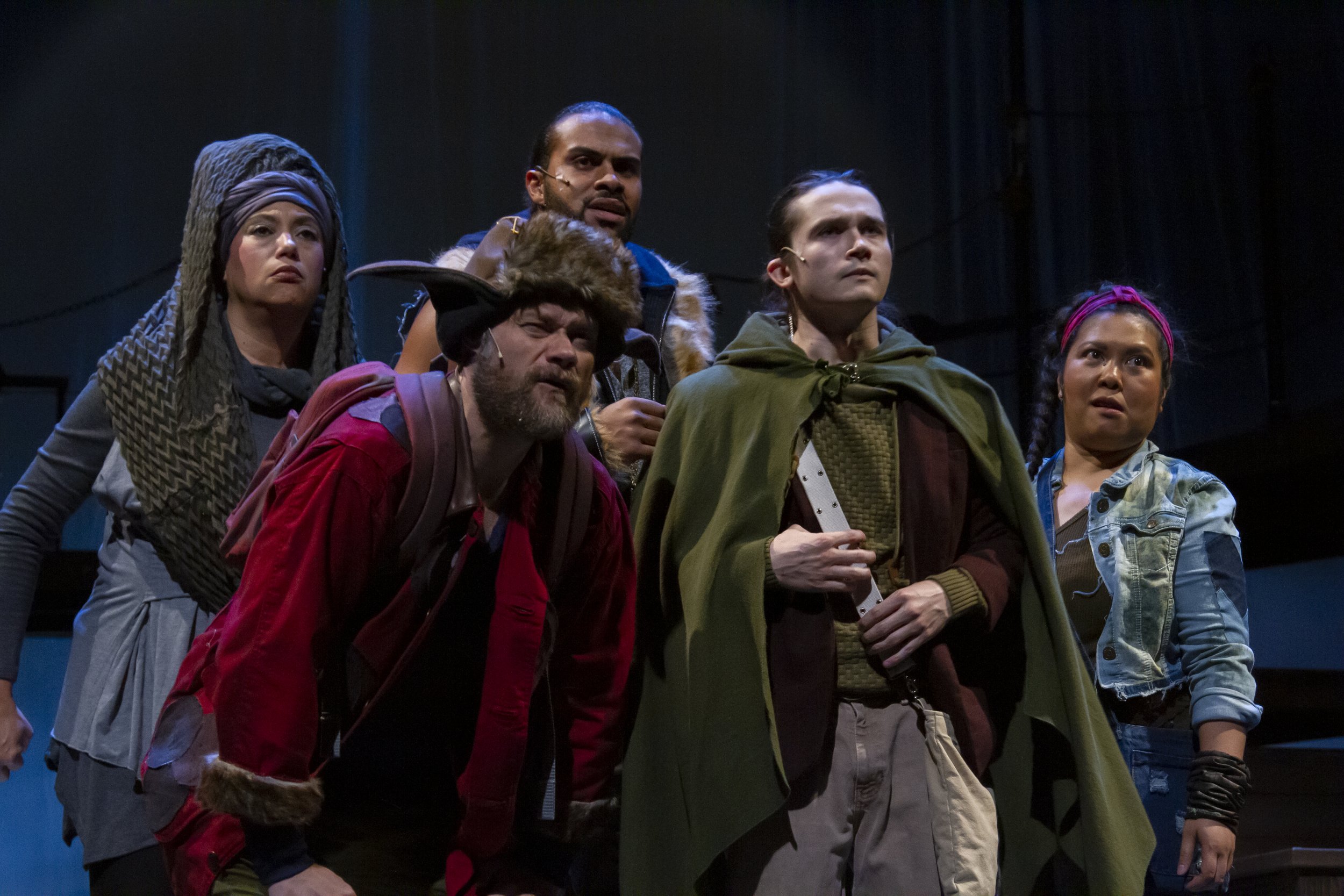NORFOLK — Those of us who encounter Charles Dickens already dead and deified at the hands of English teachers might be amazed to learn what a rock star he was in his day (1812-1870).
A scene from Virginia Stage Company's "A Merry Little Christmas Carol." Left to right, actors Mesgana Jackson, Meredith Noël, Adalee Alt and Sarah Manton. (Matthew Omilianowski)
The consummate popular artist, he sold copies of his 15 masterpiece novels at the rate of a Victorian David Baldacci. On his two American tours, he hobnobbed with superstars such as Edgar Allan Poe and Mark Twain, even venturing to Richmond, pre-Civil War, to see slavery firsthand. (According to David Perdue’s website, The Charles Dickens Page, Dickens, a staunch abolitionist, was horrified.) He was besieged by fans as voracious for tickets to his readings as Swifties are to see their Taylor. Among his fan favorites was ”A Christmas Carol,” a cash cow for him at readings, home and abroad.
The title of Mark Shanahan’s stage adaptation of Dickens’ classic 1843 novella, now at Virginia Stage Company, also alludes to the 1944 song made famous by Judy Garland in “Meet Me in St. Louis.” Shanahan’s reference to the sentimental “Have Yourself a Merry Little Christmas” is one of the only faux pas in this otherwise sure-footed show. The adapter’s choice of title (in which the VSC likely had no role, though it did select this adaptation) is unfortunate because the words “merry” and “little” together diminish and even infantilize the classic’s content and repute. Fortunately, the show itself, however, does neither; on the contrary, this production, featuring five fine Equity actors, reveals and fulfills Dickens’ fight for social justice and the VSC’s ethos on achieving the same.
Actors Mesgana Jackson, left, and Beatty Barnes in "A Merry Little Christmas Carol" at the Wells Theatre. (Matthew Omilianowski)
How does this adaptation differ from Dickens’ traditional “A Christmas Carol”? Well, in Bob Cratchit’s words, it’s a “wonderful pudding.” It’s been trimmed a good bit in both senses of the word “trim.” It’s been invigorated with incidental carols, though they are secondary in importance to plot and performance. And Shanahan’s adaptation has some leavening: contemporary break-the-fourth-wall patter with the audience, tactfully hushed in the most dramatic parts. Rest assured that the Ghost of Christmas Future will still scare the dickens out of you, aided by spooky lighting and Steven Allegretto’s impressive sound effects, including “chimes at midnight” sounding from the rear of the house.
Jeni Schaefer’s costumes (with the exception of Bob Cratchit’s office jacket?) are Victorian. (Recall that the Wells was built only 11 years after Queen Victoria’s demise!) Dahlia Al-Habieli’s serviceable uniset is surprisingly nautical in feeling (wheelhouse to conceal the piano, ship’s wheel, etc.) but begins to make sense when one considers the Wells’ proximity to old Norfolk’s waterfront plus a brief section of the play’s being set at sea.
But everyone goes to see Scrooge, and Beatty Barnes Jr., reprising his role from last year’s production, never disappoints.
Barnes draws on his talent as a stand-up comedian to execute Dickens’ puns, augmented or emphasized by adapter Shanahan (e.g., “no time like the present” said to the Ghost of Christmas Present). But even more important than comic chops is Barnes’ ability to pace his transformation from a man who despises the poor, turning down charity-seeking philanthropists by saying “Are there no prisons?” and “Are there no workhouses?” into a man who can promise to “honour Christmas in (his) heart, and try to keep it all the year.” The transformation begins as soon as his encounter with Marley, but it must not be rushed — comprising, as it does, the very backbone and arc of the story.
Actors in "A Merry Little Christmas Carol" at the Wells Theatre in Norfolk: Left to right, Beatty Barnes, Adalee Alt and Sarah Manton. (Matthew Omilianowski)
By Dr. Page Laws
Page Laws is dean emerita of the Nusbaum Honors College at Norfolk State University. prlaws@aya.yale.edu

















